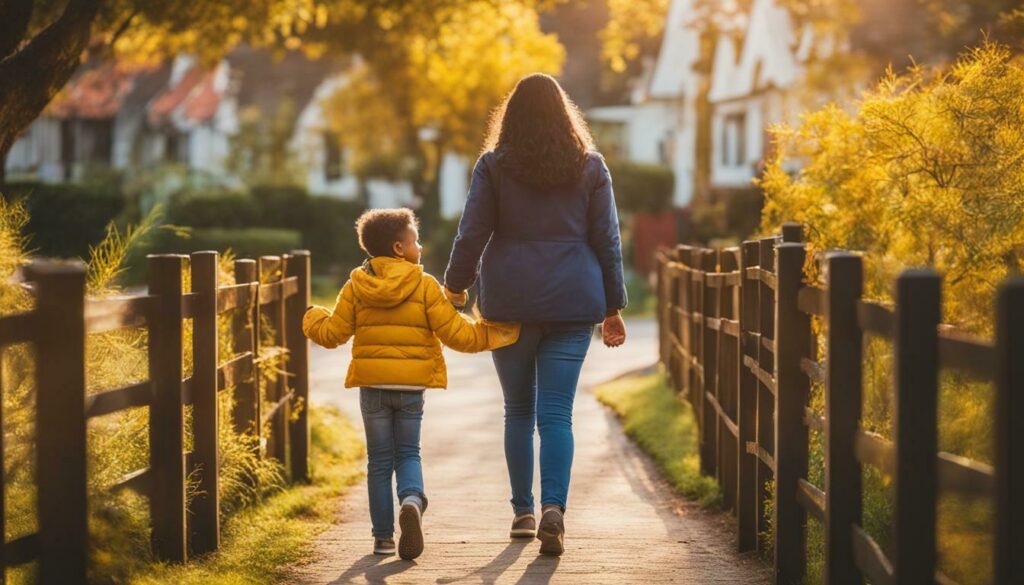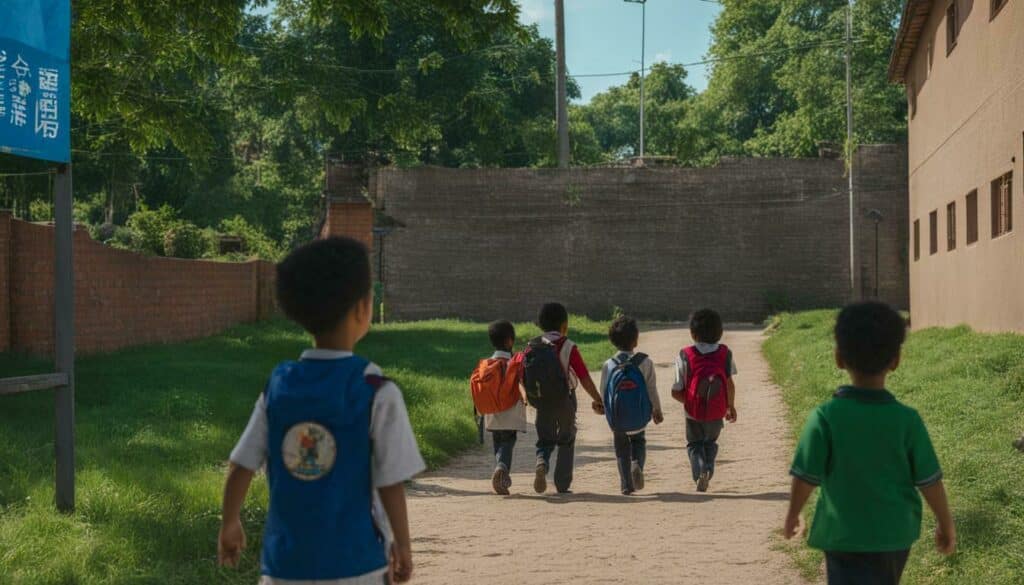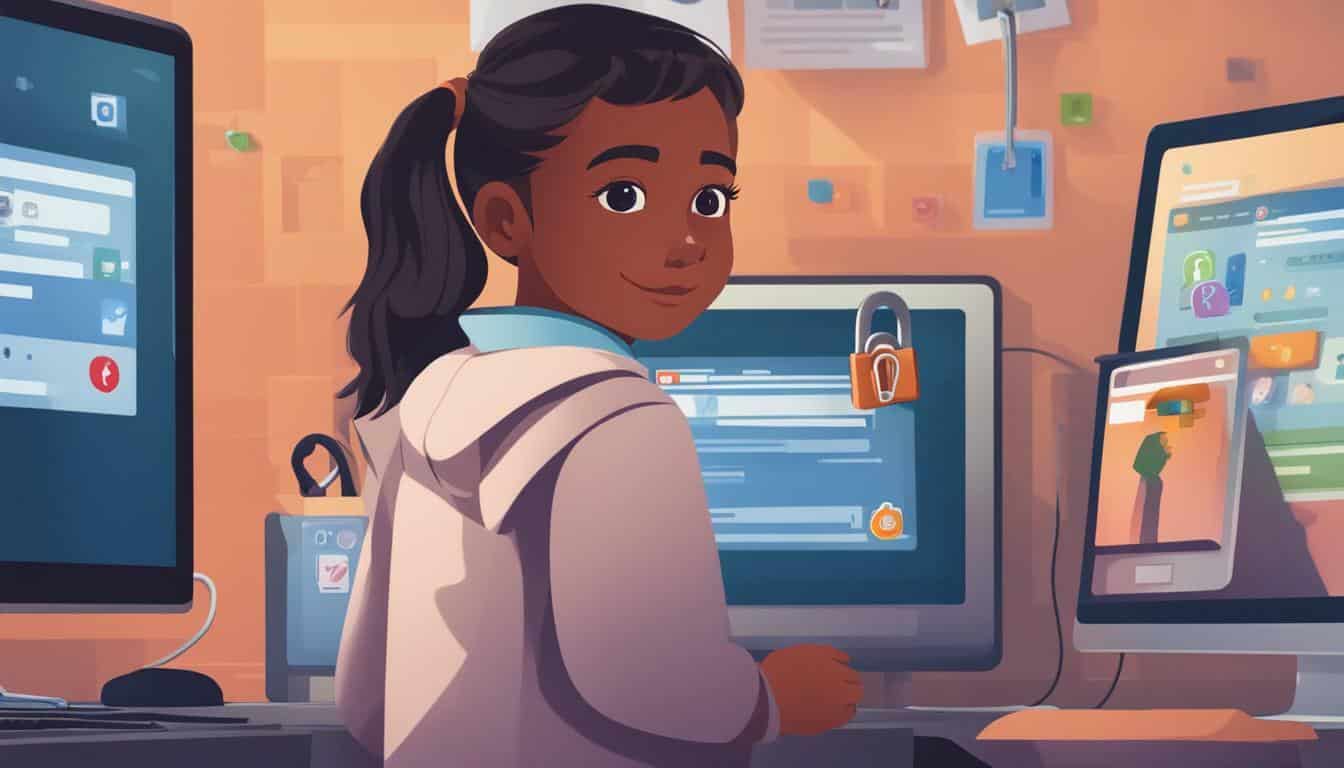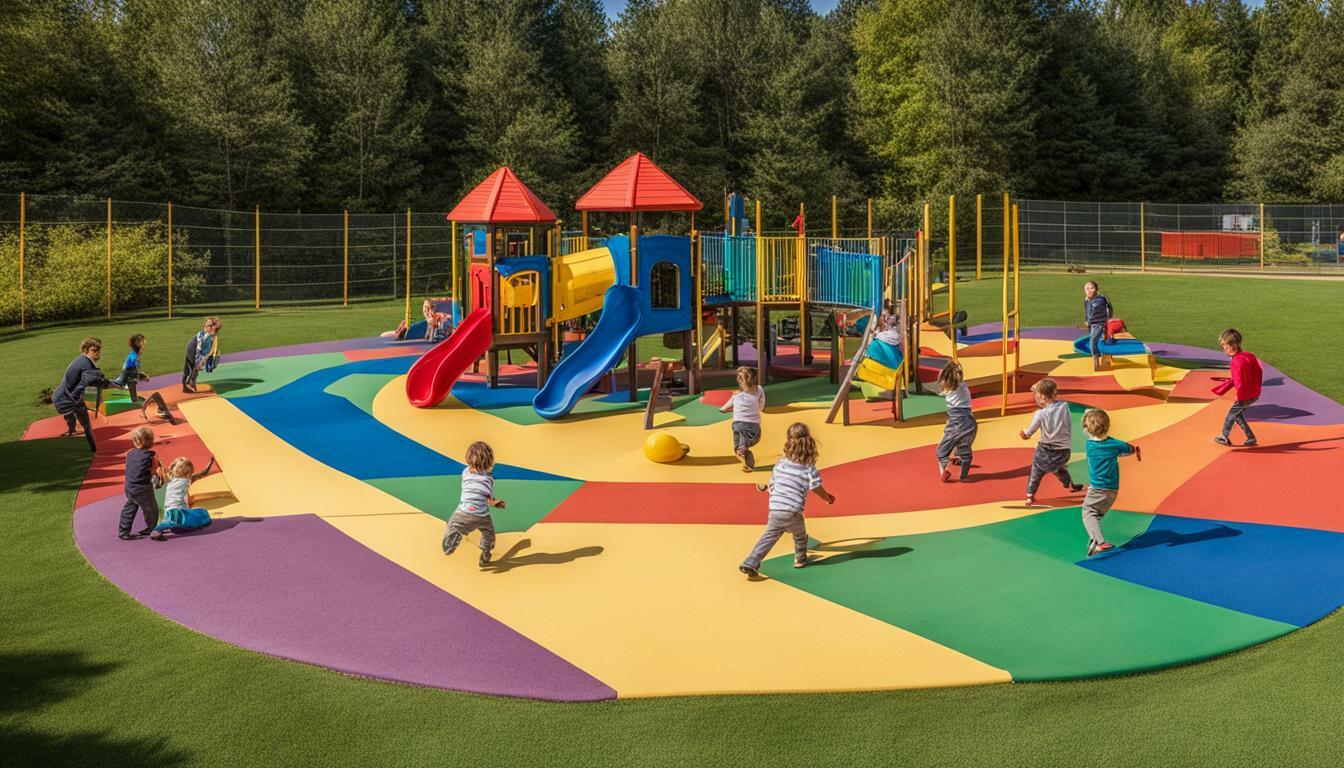Child abductions pose a significant threat to the safety of children, but by implementing effective prevention strategies, you can greatly reduce the risk. It is compulsory for parents and caregivers to take measures to protect their children from potential kidnappers. Being proactive and informed can create a safe environment for your child to thrive.
Knowing where your children are at all times is paramount. Stay informed about their daily activities and assure they have a reliable way to communicate with you. Encourage older children to call and come home at dark, and teach them to trust their feelings and say “NO” if something feels wrong. Awareness of changes in your child’s behavior is also important, as they may be signs of trouble.
Building strong relationships and open communication with your child is vital. Foster trust and encourage them to share their concerns with you. Establish clear expectations and rules with babysitters and individuals who have custody of your child. Thoroughly check references and make unannounced visits to ensure their safety.
Recognizing warning signs is necessary in preventing abductions. Stay vigilant and be alert to any suspicious behavior or individuals around your child. Teach your child basic escape techniques and empower them to respond effectively in a potentially dangerous situation.
Providing safety with caregivers is a priority. Get to know your child’s friends and their parents when allowing them to visit their homes. Establish a line of communication with your child’s school and ensure they contact you immediately if your child is absent. Make occasional checks at bus stops to observe anyone who is not normally in the area.
Equipping your child with fundamental skills is key. Teach them how to recognize and respond to threatening situations through role-playing scenarios. Provide them with resources and activities that promote personal safety.
- Knowing your child’s whereabouts and staying informed is crucial for their safety.
- Building strong relationships and open communication with your child promotes trust and safety.
- Recognizing warning signs and being vigilant can help prevent child abductions.
- Ensuring safety with caregivers involves thorough checks and open lines of communication.
- Equipping your child with essential skills empowers them to respond effectively in potentially dangerous situations.
child abduction statistics
Key Statistics
- An estimated 800,000 children are reported missing each year in the United States, or around 2,000 per day.
- Family abductions account for 49% of all child abduction cases, followed by 27% abducted by acquaintances and 24% by strangers.
- Children under 6 years old are most frequently abducted by family members, often during custody disputes.
- Non-family abductions more often involve acquaintances (27%) rather than strangers (24%). They disproportionately affect females and teenagers.
- Only around 0.35% of annual missing children cases are stereotypical stranger abductions. However, these have the highest injury and death rates.
Trends Over Time
- The number of missing child entries into the FBI’s National Crime Information Center (NCIC) increased 6.5% from 337,195 in 2021 to 359,094 in 2022.
- Recovery rates for high-risk abductions improved from 62% in 1990 to 97% in 2011, aided by AMBER alerts and improved law enforcement.
- Advocacy groups like the National Center for Missing and Exploited Children (NCMEC) have helped raise awareness and provide resources since the 1980s.
Victim Demographics
- Girls and female teenagers are disproportionately targeted in non-family abductions.
- Children aged 12 and above accounted for 81% of non-family abduction victims.
- Younger children under 6 are most often abducted by family members.
- Children with disabilities are especially vulnerable to abduction and face greater risks.
Global Perspective
- An estimated 8 million children go missing worldwide each year.
- In Europe, over 250,000 children are reported missing annually.
- Sub-Saharan Africa sees the most kidnappings globally at 37% of cases.
- Stranger abductions are rarer than family kidnappings globally as well.
While stranger abductions get more media attention, family kidnappings are the most common type of child abduction. Young kids face the greatest risks from family while older children, especially girls, are targeted more by non-family. Global trends are similar. Despite improvements, continued vigilance and resources are needed to protect vulnerable children.
Knowing Where Your Children Are
One of the most critical steps in preventing child abductions is knowing where your children are at all times. As a parent or caregiver, you guarantee their safety by being aware of their whereabouts and taking necessary precautions.

Start by establishing open lines of communication with your children. Encourage them to share their plans and activities with you, especially when they are going out with friends or attending extracurricular events. You can better assess potential risks and take appropriate action by staying informed.
Create a routine where your children regularly check in with you. Teach them the importance of calling or texting you before they leave one location and arrive at another. This practice keeps you informed and instills a sense of responsibility in your children to notify you of their movements.
They make an effort to know their friends and their parents. When your children are invited to other homes, take the time to meet the people who will be supervising them. Establishing relationships with these individuals can give you greater peace of mind and ensure your children are safe.
Setting clear expectations and rules
Setting clear expectations and rules with your children is another important aspect of keeping them safe. Make it clear that they should always inform you if their plans change or if they are going to a different location than originally intended. By establishing these guidelines, you can stay informed and quickly respond if there is any cause for concern.
| Communication Tips | Prevention Strategies |
|---|---|
| Encourage open dialogue with your children | Know their friends and their parents |
| Establish a routine for check-ins | Teach children to notify you of any changes in plans |
| Set clear expectations and rules | Keep lines of communication open with caregivers |
By staying informed of your children’s whereabouts, fostering open communication, and setting clear expectations, you can greatly reduce the risk of child abductions.
Remember, prevention is key. By implementing these strategies and prioritizing your children’s safety, you can create a secure environment for them to thrive.
Building Relationships and Communication
Building strong relationships with your child and maintaining open communication lines can be necessary in preventing child abductions. When children feel connected to their parents and trust their caregivers, they are more likely to share information about their daily activities and experiences, making identifying potential risks or warning signs easier.
Spending quality time together is one effective way to build a strong relationship with your child. Engage in activities that your child enjoys and create opportunities for open conversations. By actively listening to your child and showing genuine interest in their thoughts and feelings, you create a safe space for them to express themselves and seek guidance when needed.
Communication should also extend beyond your immediate family. It is crucial to establish a network of trusted adults, such as relatives, neighbors, or teachers, who can serve as additional sources of support and information. Encourage your child to reach out to these individuals if they ever feel uncomfortable or if they witness any suspicious behavior.
Building Trust: Tips for Effective Communication
- Be an active listener: Give your child your undivided attention and show that you value their thoughts and opinions.
- Encourage open dialogue: Create an environment where your child feels safe discussing any concerns or fears they may have.
- Teach assertiveness: Empower your child to speak up for themselves and say “NO” if something feels wrong.
- Provide age-appropriate information: Educate your child about personal safety without instilling unnecessary fear.
- Practice role-playing: Act out different scenarios to help your child develop problem-solving skills and reinforce boundaries.
Building strong relationships and fostering open communication creates a foundation of trust and support that can significantly reduce the risk of child abductions. Remember, prevention starts with proactive parenting and involvement in your child’s life.
| Warning Signs of Potential Abductors | Behavioral Changes in Children |
|---|---|
| Offers gifts or treats to children without parental consent | Withdrawal from activities or sudden loss of interest |
| Attempts to isolate children from their parents | Changes in sleep patterns or nightmares |
| Shows an unusual interest in children’s routines or schedules | Unexplained physical injuries or marks |
| Inappropriately touches or invades personal space of children | Sudden decline in academic performance |
Stay vigilant and recognize these warning signs in individuals interacting with your child. If you notice any concerning behavior or changes in your child’s well-being, immediately report it to the appropriate authorities and seek professional help if necessary.

Remember, preventing child abductions is a shared responsibility. By adopting proactive measures, fostering open communication, and staying informed about potential risks, we can create a safer environment for our children.
Recognizing Warning Signs
Being alert and recognizing warning signs is essential in preventing child abductions. Parents and caregivers can proactively keep their children safe by knowing what to look out for. Here are some key warning signs to be aware of:
- Changes in behavior: Noticeable changes in a child’s behavior, such as sudden mood swings, withdrawal from activities, or a drop in performance at school, may indicate that something is wrong. It is important to establish open lines of communication with your child to understand any underlying issues.
- Unusual interest in strangers: If a child becomes overly interested in strangers or is willing to go with them, it could be a sign that they are being groomed or manipulated. Teach your child the importance of being cautious around unfamiliar people and trusting their instincts.
- Secretive behavior: Children who become secretive, especially about their online activities or interactions, may be at risk. Regularly monitor your child’s internet usage and discuss online safety openly.
- Unusual gifts or money: It could be a warning sign if your child receives gifts or money from individuals without a clear reason. Encourage your child to share any such instances with you.
In expansion to recognizing warning signs, educating yourself about the statistics and patterns of child abductions is compulsory. According to recent data, most child abductions are committed by someone known to the child or their family. Parents and caregivers can take appropriate precautions by knowing when and where children are most vulnerable to abduction attempts.
Equipping your child with elementary skills is another vital aspect of child abduction prevention. Teaching them basic escape techniques, such as pulling away and running, striking vulnerable places, and holding onto something, can empower them to react effectively in a potential abduction situation.

| Warning Signs | Description |
|---|---|
| Changes in behavior | Noticeable changes in a child’s behavior, such as sudden mood swings or withdrawal from activities. |
| Unusual interest in strangers | An excessive fascination with strangers or a willingness to go with them. |
| Secretive behavior | Becoming secretive, particularly about online activities or interactions. |
| Unusual gifts or money | Receiving gifts or money from individuals without a clear reason. |
Safety with Caregivers
Securing your child’s safety with caregivers involves careful screening, setting clear expectations, and maintaining open lines of communication. When entrusting your child’s care to someone else, it is essential to take steps to ensure their well-being and protection.
Careful Screening: Before hiring a babysitter or leaving your child in the care of someone else, it is crucial to screen potential caregivers thoroughly. This includes checking references, conducting background checks, arrest record search, warrants Searches and even making unannounced visits to their home or daycare facility. By doing so, you can gain valuable insights into their character, reliability, and ability to provide a safe environment for your child.
Clear Expectations: Once you have chosen a caregiver, it is important to establish clear expectations and rules. Clearly communicate guidelines for discipline, screen time, safety protocols, and any other pertinent information. This will help ensure that both you and the caregiver are on the same page and that your child’s well-being is prioritized.
Open Communication: Maintaining open lines of communication with your child’s caregivers is paramount. Regularly check in with them to discuss your child’s progress, any concerns, or changes in routines. Encourage caregivers to share any observations or incidents that may occur while your child is under their care. This open dialogue creates a partnership that fosters trust and ensures that any potential issues are promptly addressed.
| Screening Tips | Expectations and Rules | Communication Guidelines |
|---|---|---|
|
|
|
“Effective communication is the key to ensuring the safety and well-being of your child in the care of others. By establishing clear expectations and maintaining open lines of communication, you can create a trusting relationship with caregivers and ensure your child’s needs are met.”
By taking these precautions and actively participating in your child’s care, you can help prevent potential risks and provide a safe environment for your child. Remember, being proactive and staying involved are crucial steps toward ensuring the safety and well-being of your child in the hands of caregivers.

Friends and school play a significant role in your child’s safety, and building relationships and staying informed in these areas is important. By getting to know your child’s friends and their parents, you can establish a network of trusted individuals who can help keep an eye out for any potential dangers. Maintaining open lines of communication with other parents and regularly checking in on your child’s friendships can provide valuable information and reassurance.
Stay involved in your child’s school life. Keep in touch with teachers and administrators so they directly communicate with you if any concerns arise. Ensure that the school has your contact information and is aware of any custody arrangements, as this will help them stay prepared and responsive to your child’s needs.
Encourage your child to talk openly about their experiences at school. Ask questions about their day, their interactions with classmates, and any concerns they may have. By fostering an environment of trust and open communication, you can better identify any signs of potential danger or distress.
Building Relationships with Friends and School
Building relationships with your child’s friends and their parents is key to ensuring their safety. Take the time to introduce yourself and get to know the families of your child’s closest friends. Establishing a sense of trust and familiarity will create a support system that can help keep an eye out for any potential risks or threats.
You can also consider organizing playdates or gatherings where you can meet and interact with your child’s friends and their parents. This allows you to observe the dynamics between your child and their peers and provides an opportunity to discuss safety concerns and establish common ground.
Remember, friends and school are important pillars in your child’s life. By actively engaging with and staying informed about these areas, you can create a safer environment where your child can thrive.
| Key Points: | Tips for Parents: |
|---|---|
| 1. Get to know your child’s friends and their parents. | – Introduce yourself and establish a relationship with other parents. |
| 2. Stay involved in your child’s school life. | – Keep in touch with teachers and administrators. |
| 3. Foster open communication with your child. | – Ask questions about their day and any concerns they may have. |
| 4. Organize playdates or gatherings with friends and their parents. | – Establish common ground and discuss safety concerns. |
By prioritizing relationships with friends and school, you can create a supportive network that ensures the safety and well-being of your child.

Equipping your child with essential skills can empower them to respond confidently and make quick decisions in a potential abduction situation. Teaching them the necessary knowledge and techniques can greatly increase their safety and reduce the risk of child abductions.
One necessary aspect is to teach your child to trust their feelings and instincts. Encourage them to listen to their inner voice and to say “NO” if something feels wrong. Emphasize the importance of their personal boundaries and reinforce that they have the right to protect themselves. it is vital to teach your child basic escape techniques. Practice scenarios where they learn to pull away and run, strike vulnerable places, or hold onto something to create distance. By imparting these skills, your child will be better prepared to respond effectively and protect themselves from potential abductors.
It is necessary to move away from the concept of “stranger danger” and instead focus on teaching your child to identify and respond to threatening situations. Educate them about the warning signs of potential abductors and discuss when and where they may be most vulnerable to abduction attempts. Role-playing scenarios can help them practice these skills and reinforce their understanding of personal safety.
By taking these proactive measures and equipping your child with essential skills, you can confidently empower them to navigate potential abduction situations. Remember, knowledge and preparation are key to ensuring your child’s safety.
FAQ
Q: Why is preventing child abductions important?
A: Preventing child abductions is crucial for ensuring the safety of children.
Q: What measures can I take to protect my child from potential kidnappers?
A: Some measures you can take include knowing where your child is at all times, being familiar with their friends and daily activities, and reminding older children to call and come home at dark.
Q: What should I do if I notice changes in my child’s behavior?
A: It’s important to be alert to your child’s behavior changes, as these may be signs of trouble. Talk to your child and seek professional help if needed.
Q: How can I teach my child to stay safe?
A: Teach your child to trust their feelings and to say “NO” if something feels wrong. Also, educate them about personal safety through role-playing scenarios and provide them with resources and activities to help prepare them to respond to a potential abduction.
Q: How can I ensure safety with caregivers?
A: Be cautious when choosing babysitters and individuals who have custody of your child. Thoroughly check references and make unannounced visits. Establish clear expectations and rules with babysitters, and keep lines of communication open with them.
Q: How should I ensure my child’s safety at school and with friends?
A: Get to know your child’s friends and their parents when allowing them to visit friends’ homes. Ensure that schools contact you immediately if your child is absent. Occasionally, check on your children at bus stops and observe anyone who is not normally in the area.
Q: How can I equip my child with essential skills to respond to a potential abduction?
A: Teach your child basic escape techniques, such as pulling away and running, striking vulnerable places, and holding onto something. Move away from the “stranger danger” concept and focus instead on teaching your child to identify and respond to threatening situations.










